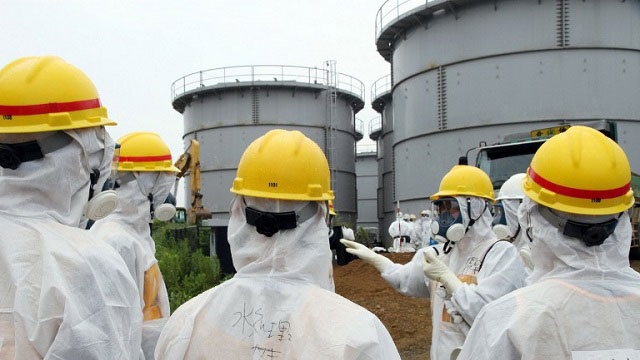SUMMARY
This is AI generated summarization, which may have errors. For context, always refer to the full article.

TOKYO, Japan – The world’s nuclear watchdog has urged Japan to explain more clearly what is happening at Fukushima and avoid sending “confusing messages” about the disaster, the country’s atomic regulator revealed Wednesday, August 28.
The International Atomic Energy Agency questioned why the leak last week of 300 tons of highly radioactive water merited a rating on its International Nuclear Event Scale (INES), when no other incident since the March 2011 meltdowns had.
Local regulators on Wednesday rubber-stamped their earlier assessment of the huge spill, in which one of around 1,000 tanks at the site was found to be holed, as being INES Level 3.
That made it the single most serious incident since three reactors went into meltdown after being swamped by the earthquake-sparked tsunami.
The initial catastrophe, which spewed radiation over the countryside and sent tens of thousands of people fleeing, was rated Level 7, the same as the 1986 Chernobyl disaster.
Last week’s spillage was “the most recent of a number of events that involved leakage of contaminated water”, the IAEA said in a document submitted to Japan’s Nuclear Regulatory Authority.
“Previous similar events were not rated on the INES scale. The Japanese Authorities may wish to prepare an explanation for the media and the public on why they want to rate this event, while previous similar events have not been rated.”
Growing problem
Fukushima operator Tokyo Electric Power (TEPCO) is struggling to deal with the vast — and growing — volume of now polluted water it has used to cool the broken reactors.
It said last week that some of the 300 tons that leaked from the tank could have made its way through drainage systems into the Pacific Ocean.
That came on top of the admission that groundwater contaminated by water from the plant was flowing into the sea at a rate of 300 tons a day, taking its low-level radioactive load with it.
The IAEA cautioned against the frequent use of INES evaluations in the future, saying this risked clouding the issue in the public mind.
“One possible communication strategy, rather than using INES as a communication tool to rate each event in series of similar events, would be to elaborate an appropriate communication plan to explain the safety significance of these types of event,” it said.
“This would avoid sending confusing messages to the media and the public on a possibly long series of INES-rated events at the lower levels of the scale, for the duration of the entire recovery operation”, which is expected to take up to 40 years.
Situation unclear
The chairman of Japan’s nuclear watchdog said Wednesday his committee approved the designation of Level 3, but things were still unclear.
“We don’t know what exactly the situation is, how much has leaked, how radioactive it was, or where it was going,” Shunichi Tanaka said.
“We may have to change it when TEPCO comes to disclose more information.”
However, he also accused the international press of not fully grasping the INES designations.
“Some foreign news media have reported the situation is serious just because it is scaled at level 3,” he said. “I don’t think they understand the scale properly.”
But he admitted: “Information is rather scarce. We have not provided substantial information.”
Fukushima Governor Yuhei Sato later met Tanaka and said the government should disclose the results of maritime monitoring “quickly and comprehensively”.
“The upgrade to Level 3 shows how extremely serious the accident is including the issue of toxic water,” he said. “I want the government to realize that this is an emergency and take measures to tackle it.”
Hirohiko Izumida, governor of Niigata which also hosts a huge seven-unit nuclear plant operated by TEPCO, was scathing about the utility and called on the nuclear authority to ramp up its safety requirements.
Referring to TEPCO’s failure to come clean about the radioactive waste water, he said: “TEPCO is a company that lies. I am skeptical about its ability to safely operate nuclear power plants.”
Separately TEPCO announced it would sell land and a building in the pricey Ginza district of Tokyo for 23.6 billion yen ($242 million). TEPCO, which faces towering bills for compensation and the clean-up said it would use the cash for “restructuring”. – Rappler.com
Add a comment
How does this make you feel?
There are no comments yet. Add your comment to start the conversation.